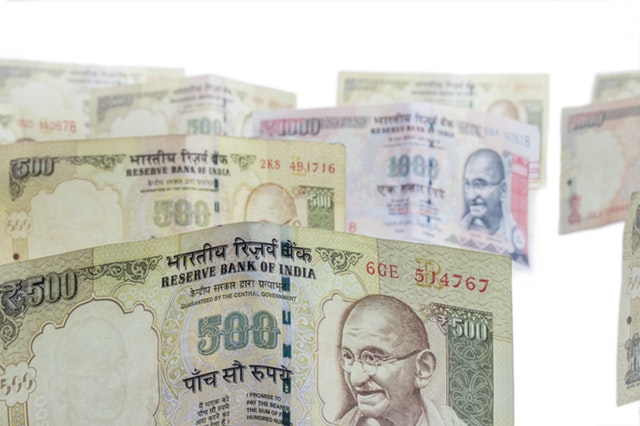
Saharanpur's handicraft traders say demonetisation, GST major poll issues

Once upon a time not so long ago, Abdul Salam Road was abuzz with the sights and sounds of prosperity as buyers from all over India snapped up furniture, frames, filigreed panels and all things wooden. But that happy tale ended on November 8, 2016, when high value currency notes were demonetised, dealing a body blow to the industry that sustained 1.5 lakh artisans in this western Uttar Pradesh town, say artisans and traders.
Now the street, the once beating heart of the ₹400 crore wooden handicraft cottage industry, is deserted with shops empty of customers but full of unsold items. On November 8, 2016, this street changed. We changed. Demonetisation followed by imposition of GST (goods and services tax) turned Saharanpur’s pride into a curse, said Zakir Hasan, a trader.
The unorganised sector of Saharanpur is still struggling to recover from the aftershocks of demonetisation. It will clearly reflect when the election results are announced, he told. The 1.5 lakh artisans in Saharanpur, which votes in the first phase on April 11, form around 8% of the city’s voting population. Though the impact of demonetisation and GST might not be the only deciding factor in a state politicised on caste lines, traders and artisans say it is a major issue and will influence their vote.
Demonetisation caused instability
According to Hasan, demonetisation and the resultant instability forced nearly 40% of his workforce of skilled craftspersons to quit and join other professions. Among them is Ramesh Kumar, who now pulls a rickshaw on Abdul Salam Road, the same street where he once carved wooden articles. The Mughal nakkashi (designs) I made were famous. But I was pushed to the brink of starvation after demonetisation and I decided to give up the profession, Kumar said. Asked if he would go back to being a wood carver if the situation improves, he said no. Why should I? I earn more by pulling rickshaws. It (restoring the art) would anyway die a quicker death with such policies of the government.
Raees Ahmed, the owner of National Handicraft, a shop in Qutub Sher market in the city, agreed. The rate at which the workforce is leaving this profession, it will disappear in 25 years, he said. Most people working in the sector said demonetisation led to an unprecedented cash crunch in the market, reducing demand for their products and their capacity to pay the daily wages to workers. Others said the rolling out of GST in July 2017, nearly nine months after demonetisation, led to a spike in the prices of the articles. The handmade wooden articles travelled to fancy showrooms across the country and were exported to various parts of the world.
Ahmed showed his showroom storing spectacular wooden articles but with barely any customers. My exports were around ₹1 crore before 2016 but are now almost zero. Consumers are not ready to buy products from us at such high GST rates. He said the implementation of GST was the final blow to the cottage industry. Earlier, we paid 14% tax, which shot up to 28% after GST. It has now been reduced to 18%. It is still a lot for us, he said. Our sales have reduced and profit margins are negligible. Customers refuse to buy high-priced items, Ahmed added.
The traders want the sector to be exempted from GST. They say reviving the industry will generate employment, boost exports and bring the glory back to the city of Saharanpur. We have met government officials several times (to raise our problems). Now this election will help us send our message loud and clear, Ahmed said. He said the traders will vote for the party that assures them exemption from GST.
BJP says ‘demo’ had no adverse effects
However, the BJP said there has been no adverse effect of demonetisation or GST on the sector. BJP’s Raghav Lakhan Pal, who was elected to the Lok Sabha from Saharanpur in 2014 and is contesting again from the constituency, said Chief Minister Yogi Adityanath has introduced the One District, One Product scheme’ to revive the handicraft industry. The scheme aims to expand the reach of the products through digitisation. It is the result of this (scheme) that the industry has done a business of ₹1,500 crore, he said.
The Congress alleges that demonetisation and high GST rates have crushed the business. It said it will focus on highlighting the ill-effects of demonetisation in this election. Though the impact of demonetisation and GST might not be the only deciding factor in this state politicised on caste lines, traders believe it is perhaps a major issue. The election is expected to be a three-way keenly fought contest between the Congress, the BJP and the ‘mahagathbandhan’ of the SP, the BSP and the RLD.
The Congress has fielded seasoned leader Imran Masood while the BSP has pitched Faizul Rehman in the election. All of them are promising to promote the handicraft industry but traders, who claim they voted for ache din in 2014, maintain that political parties must convince them this time to get their vote. Saharanpur has a total of 17,22,580 voters out of which 6 lakh are Muslims. There are around three lakh SC/ST voters followed by 1.5 lakh Gujjars. There are 8,00,393 female voters.
In 2014, Pal had won with a narrow margin of 65,090 votes. A total of 4,72,999 votes were cast for him. Masood had come second with 4,07, 909 votes. Jagdish Singh Rana, who had contested from BSP, got 2,35,033 votes while SP candidate Shahjan Masood got 52,765 votes.


